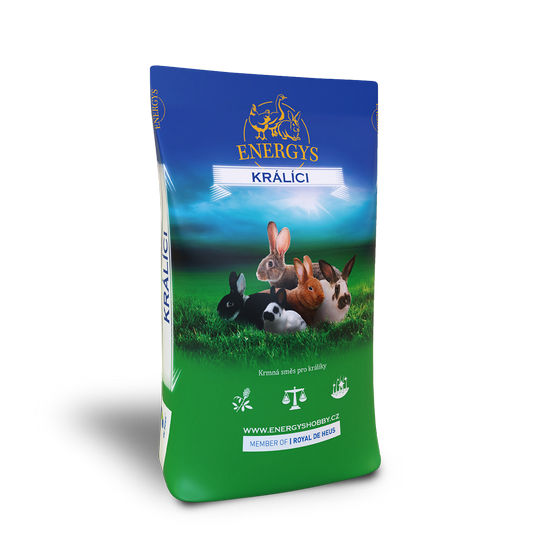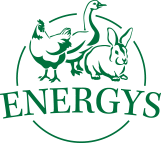Rabbits
Poultry
Laying hens
Quails
Guinea pigs
Pigs
Ostriches
Sheep and goats
Pigeons
Pheasants
Forest animals
Summer and rabbits – how to eliminate heat stress?
This year, we are experiencing several very hot days. High temperatures have a negative effect on our rabbits, as they suffer thermal stress. There are several recommendations for eliminating this adverse effect and keeping animals in a good state of health.
The optimal temperature for a healthy adult rabbit ranges between 15 and 17°C. Rabbits can regulate their body temperature without major problems in environments with ambient temperature between 5 and 22°C. The use of thermoregulation systems allowing rabbits to cool down (in warmer environments) or warm up (in cooler environments) is essential at higher or lower temperatures. In view of the natural survival strategy, rabbits are more capable of tolerating lower rather than higher temperatures. As rabbits cannot sweat effectively, their thermoregulation options during the summer period are limited. The following examples of eliminating the impact of heat stress from practice may be recommended.
- Location of rabbit hutches
Outdoor rabbit hutches are best placed in permanent shade (for example under a large tree, under an overhanging roof, etc.) whenever possible. If the specific breeding and spatial conditions allow for this, the front of a rabbit hutch should face east to south-east. In this case, rabbits are only directly exposed to the moderate morning sunlight. The use of old farming buildings (sheds) with a large volume of air and the tendency to maintain relatively stable microclimate appears to be ideal for these purposes.
- Insulating material in rabbit hutch roof
The use of an insulating material between the hutch roof and the ceiling of the top pens should not be underestimated when building an outdoor rabbit hutch. Adequately installed glass wool or a sufficient layer of polystyrene have been proven effective. This reduces the amount of heat permeating through the roof (often unfortunately made of sheet metal, which heats up fast) to the pens.
- More frequent cleaning in pens with solid floor
When solid floors with bedding material are used in pens, the used bedding material is gradually accumulated. If the frequency of cleaning in pens during the summer period is insufficient, the bedding material heats up spontaneously and rabbits are threatened not only by heat from the ambient air, but also from the floor. More frequent cleaning in pens (once a week) is therefore suitable during summer. This will also provide a cleaner environment for rabbits (especially light-colored breeds).
- Reproductive rest
Pregnant does and does after delivery have a higher metabolic rate and therefore are more susceptible to the effects of heat stress (among other factors). Pairing rabbits during this period is therefore not recommended. In addition, does do not conceive easily in summer.
- Installation of the so-called landings
The so-called landings are excellent and inexpensive prevention of thermal stress. These are boards approximately 15-25 cm wide (depending on the breed), installed approximately 20 cm above the floor in the rear part of the pen. Rabbits like to use these for relaxation and cooling. Landings may be solid or perforated.
- Air moistening
Air temperature and moisture are inseparable factors that work concurrently. During hot summer days, when the air moisture is lower (approx. 40-50%), thorough spraying of the space in front of rabbit hutches with water twice to three times a day has proven to be effective. Water has a cooling effect as it evaporates.
Related posts
10. April 2024
Keeping dwarf rabbits as pets is becoming increasingly popular. It does not require a lot of space and is ideal for people who live in smaller homes or apartments. Dwarf rabbits are also very friendly, so it’s no wonder that people are choosing them for this purpose more and more often. As with all animals,…
30. August 2022
In this article we will discuss several rabbit diseases – ear scab, tyzzer’s disease and heat stress.
24. August 2022
In this article we look at two diseases – e.Coli and enterocolitis.
2. August 2022
In this article we look at two common rabbit diseases, myxomatosis and infectious rhinitis.
13. July 2022
In the following article we will discuss rabbit plague – rhd or vhd (viral haemorrhagic disease of rabbits).
Related products

RABBIT DWART
Complete pelleted feed for dwarf rabbits with high digestibility. It contains a high proportion of fibre (high alfalfa and grass cake content) and a reduced sugar and starch content. Contains flaxseed, which has a positive effect on coat quality. Suitable for daily feeding. We recommend providing rabbits with safe fresh water and hay.

RABBIT CHAMPION
Feed for show rabbits, does not include Coccidiostat. A unique mix significantly supports the quality and growth of fur. Serve when moulting and at least two months before the start of the show season.

RABBIT GOLD FORTE
A premium feed mix in an ideal make up for gestating and breast feeding females. For the intensive fattening of rabbits for a period of up to 5 days before slaughter. It supports fast growth, meat content and an excellent state of health. It contains a coccidiostat which lowers the risk of mortality.

RABBIT KLASIK FORTE
Intended for the fattening of rabbits up to a point at least 5 days before slaughter. Suitable for attaining a high meat content and an excellent state of health. Thanks to its Coccidiostat content it lowers the animals mortality.

RABBIT KLASIK
For the final phase of rabbit fattening, a minimum of 5 days before slaughter. It supports high meat content and excellent taste qualities in rabbit meat. Without a coccidiostat.

RABBIT START
For young rabbits from the start of accepting feed to 4-6 weeks after weaning. The feed helps to significantly lower the death rate in the period around weaning. It contains a raised percentage of fibre and less starch. It does not contain a coccidiostat.
